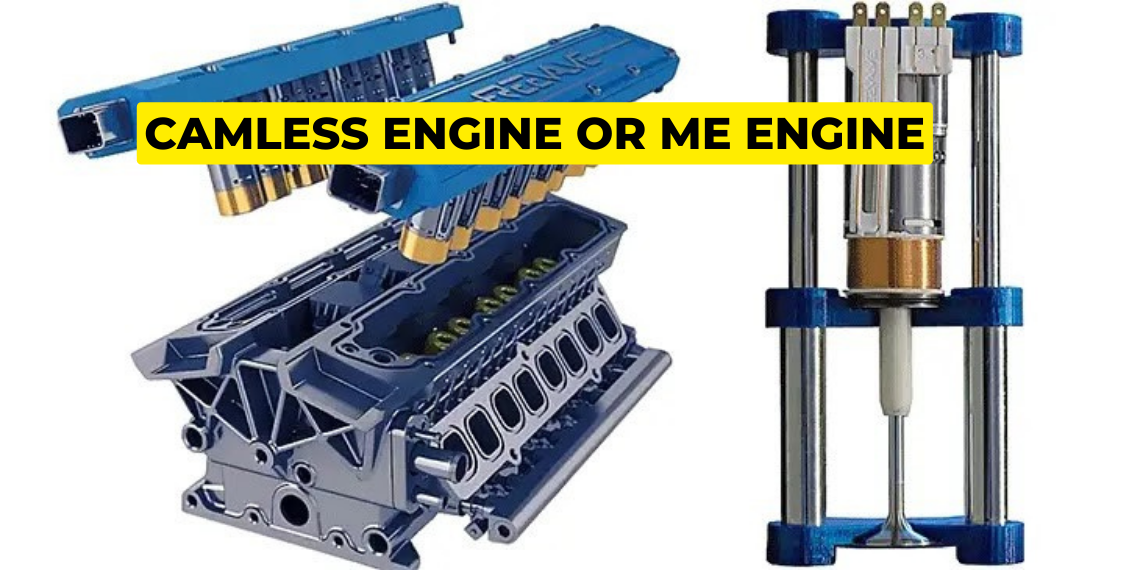Camless engine
A camless engine is a type of internal combustion engine that uses electronic actuators to control the valves, rather than the traditional camshaft. These engines are called ME engines or Mechanical Electronic engines. They were designed to improve engine performance, reduce emissions, and increase fuel efficiency.

Why did the Camless engine come into action?
Camless engines came into action due to the following reasons:
- In normal engines valve timing is controlled by the camshaft due to which a large amount of energy is lost in rotating the camshaft. But in these new ME engines there is no cam so there is no power loss. This allows for greater control over the timing and duration of the valve opening and closing, resulting in improved efficiency and power output.
- Camless engines also have fewer moving parts than traditional camshaft-driven engines, which reduces the weight and complexity of the engine. This can improve fuel efficiency and reduce maintenance costs, weight and complexity of the engine. This can improve fuel efficiency and reduce maintenance costs.

Overall, camless engines offer several advantages over traditional camshaft-driven engines, including improved engine performance, reduced emissions, increased fuel efficiency, and reduced maintenance costs. As a result, they have become increasingly popular in marine and other applications where performance and efficiency are critical.
Note:
If you want to learn more about this topic, we suggest checking out our ME Engine package with the given link https://merchantnavydecoded.com/courses/me-engine-package/. It’s a great way to dive deeper into the subject through video explanations. This package covers all the important details and presents them in an easy-to-understand format. Watching the videos will help you grasp the topic better and make learning more enjoyable. So, we highly recommend giving our Combo package a try to enhance your knowledge on the subject.
Disclaimer :- The opinions expressed in this article belong solely to the author and may not necessarily reflect those of Merchant Navy Decoded. We cannot guarantee the accuracy of the information provided and disclaim any responsibility for it. Data and visuals used are sourced from publicly available information and may not be authenticated by any regulatory body. Reviews and comments appearing on our blogs represent the opinions of individuals and do not necessarily reflect the views of Merchant Navy Decoded. We are not responsible for any loss or damage resulting from reliance on these reviews or comments.
Reproduction, copying, sharing, or use of the article or images in any form is strictly prohibited without prior permission from both the author and Merchant Navy Decoded.



Sir please add pros and cons as well…
Thanks for writing.